Learn everything you ever wanted to know about the vitamin in our Vitamin D Guide for Beginners.
Vitamin D is different from most other vitamins. In fact, it is a steroid hormone made from cholesterol when the skin is exposed to the sun. And for this reason, vitamin D is called “the sunshine vitamin.” In this vitamin D guide you will learn everything you need to know about this vitamin.
First things first: The sun does not provide enough vitamin D all year round. Vitamin D is found in very few foods. That’s why vitamin D deficiency is common and supplementation makes sense.
Vitamin D – briefly explained
Vitamin D is a fat-soluble vitamin that is produced by the body via sunlight (UVB light). It is only found in small quantities in our food. The proportion of the total supply of vitamin D from food is 10%. But the lion’s share of our daily needs must be supplied through sunlight or supplements.
What do we need vitamin D for?
Vitamin D helps regulate the amount of calcium and phosphate in the body. These nutrients are needed to keep bones, teeth and muscles healthy. But a lack of vitamin D can lead to bone deformities such as rickets in children and bone pain in adults caused by a condition called osteomalacia.
It is also an important control hormone for the immune system. This is because vitamin D receptors and activating enzymes are found on the surfaces of all white blood cells. The role that vitamin D plays in keeping the immune system healthy is very complex, because the immune system must be perfectly balanced. If it is over-stimulated, autoimmune diseases can occur. If the immune system is not sufficiently active, frequent infections may occur. Low vitamin D levels are associated with worsening autoimmune diseases.
Other health benefits of vitamin D
- Lower risk of osteoporosis, falls and fractures. Higher doses of vitamin D help prevent osteoporosis, falls, and fractures in older adults (1)
- Better resilience. Vitamin D increases the performance of both the upper and lower extremities (2) .
- Cancer screening. One study found that 1,100 IU of vitamin D per day – in addition to calcium – reduced cancer risk by 60% (3)
- Depression management. Studies show that vitamin D relieves symptoms in people with clinical depression. (4)
- Reduced risk of type 1 diabetes. A study in infants associated 2,000 IU of vitamin D per day with a 78% reduced risk of type 1 diabetes (5)
- According to recent studies, vitamin D improves insulin sensitivity and secretion, stabilizes blood sugar, and leads to increased fat burning. (6, 7)
- Positive effect on irritable bowel syndrome. A study has also shown that vitamin D supply has a positive effect on irritable bowel syndrome. (8)
However, many of these results are preliminary. Thus, more evidence is needed to confirm many of these benefits.
The influence on cell health
Vitamin D plays a central role in cell health – without vitamin D, no cell functions smoothly. When we suffer from a deficiency, every single cell in our body suffers and so does our overall health.
A study has shown that a good vitamin D supply positively influences mortality. It concluded that an average of 18,000 lives could be saved each year in Germany if the vitamin D supply were better (3).
Vitamin D occurs in nature in two forms
As vitamin D3 (cholecalciferol), it is found in animal sources and some lichen species. Vitamin D2 (ergocalciferol) is found in all other plants. Both forms are biologically inactive and are only converted into their active form in the body. Vitamin D ingested through food, sun or supplements is converted to its transport form (25-OH D3/25-hydroxy vitamin D, more commonly calcidiol) in the liver. This Vitamin D Guide explains what happens in the body:
Via the blood, vitamin D reaches the tissues and kidneys. There it is converted into the activated vitamin D hormone calcitriol. And in this form it controls the absorption and utilization of calcium and the calcium level in the blood, bones and intestines.
Sunshine as a source of vitamin D
Vitamin D is made from cholesterol in the skin when exposed to the sun’s ultraviolet B (UVB) rays. Condition: The skin must not be covered.
In northern European countries, sunshine from May to October is strong enough to produce vitamin D in the skin. The so-called UV index should be above 3. You can find the UV index for your region, for example, at wetteronline.de/uv-index.
Vitamin D Guide: Annual course of vitamin D synthesis
The time needed to produce enough vitamin D with the help of the sun depends on many factors. This includes how much of the skin is covered by clothing, whether sunscreen is used, how pigmented the skin is, and how old you are. There is no universal guideline for the right amount of sun exposure.
In general, it is believed that sun exposure of about 15 minutes is enough to produce vitamin D. However, it is important that you do not use sunscreen and that your arms and legs are uncovered.
Rule of thumb for vitamin D formation
Vitamin D formation is triggered by the sun only when your shadow is shorter than you are. Or vice versa: if your shadow is longer than you are tall, the sun’s rays will not form vitamin D in your skin. And that’s true even if the sky is overcast and you can’t see a shadow.
Keep in mind that UVA and UVB radiation from the sun is associated with an increased risk of skin cancer. It’s also possible that your sensitivity to the sun speaks against being out in the sun unprotected.
Vitamin D sources in food
Here is the vitamin D content of the best food sources:
– Cod liver oil (12,000 I.U.)
– Dried shiitake mushrooms (1,600 I.U.)
– Herring (1,000 I.U.)
– Wild salmon (800 I.U.)
– Sardines (450 I.U.)
– Eggs (120 I.U.)
– Butter (50 I.U.)
Signs of a vitamin D deficit
- Tiredness and lack of energy – A lack of vitamin D can lead to constant tiredness and low energy levels.
- Weak bones – Low vitamin D levels impair calcium absorption and can reduce bone density, which can lead to osteoporosis and bone fragility.
- Muscle weakness – Vitamin D plays a role in muscle function. A deficiency can impair muscle strength and performance.
- Low mood and depression – Vitamin D influences serotonin production in the brain, which is linked to mood.
- Frequent infections – vitamin D strengthens the immune system. Low levels can lead to increased susceptibility to colds and infections.
- Hair loss – Low vitamin D levels are associated with hair loss and weaker hair growth.
- Weight gain – A vitamin D deficiency can lead to metabolic changes that promote weight gain.
- Pain in the bones and lower back – People with vitamin D deficiency often complain of vague bone pain and discomfort in the lower back.
- Poor sleep – Vitamin D also plays a role in sleep regulation. A deficiency can impair the quality of sleep and lead to problems falling asleep.
A permanently low vitamin D level can also lead to a disease called osteomalacia in adults and rickets in children. Left untreated, both conditions lead to soft, brittle bones, bone pain, and muscle aches and weakness. Osteoporosis is associated with reduced bone density, leading to an increased risk of falls and fractures.
How much vitamin D do I need?
Blood levels of vitamin D and their interpretation by the Robert Koch Institute:
| nmol/l | ng/ml | Interpretation |
| <30 | <12 | Vitamin D deficiency |
| 30-<50 | 12-<20 | Unterversorgung |
| 50 -<75 | 20-<30 | Good normal values |
| 75-<125 | 30-<50 | Good high values |
| ≥125 | ≥50 | Überversorgung |
The vitamin D level in the blood should be between 40 and 80 ng/ml, according to the consensus of international experts. Studies show that up to 90% of German adults and children – especially in winter – do not reach this value.
The reason lies in changing lifestyles: people spend too much time indoors and only go out in the sun in a sheltered way, which means that vitamin D production is lacking.
The only way to check if there is a deficit is to measure blood levels.
Calculation of vitamin D requirement
The vitamin D requirement is expressed in micrograms (µg) and in so-called “International Units”: I.E. =International Unit or I.U. =International Unit.
1 I.U. is equivalent to 0.025µg (micrograms) of vitamin D, or 1 µg is 40 I.U.
The Food Regulation (EU) No. 1169/2011 of the European Parliament provides 5µg (200 I.U.) per day as the reference amount for the intake of vitamin D in adults. In this regard, it is important to know that this value represents the compromise of all EU countries. The underlying amount of sun varies widely across the states.
The recommendations of the German Nutrition Society (DGE) are significantly higher because there is less sunshine in Germany. Children over 1 year of age, adults, and pregnant women need 800 I.U. (or 20 µg of vitamin D) from the three sources of food, sunlight, and supplements, according to the DGE. However, there is research that puts this value significantly higher, up to 4,000 IU per day.
-
Set 2x Hello Sunshine | Bio Vitamin D3 Complex 2.000 I.U.
2-pack (=8-month supply) of natural vitamin D3 with 2,000 I.U. per capsule from organic lichen plus organic Reishi extract95,90 €119,80 €2.186,13 €1.750,00 € / kg
Vitamin D Guide Rule of thumb
- With sunbathing for 10-15 minutes in the summer months.
- around noon
- with one quarter uncovered skin
- for people with skin type III (medium-light skin, brown hair, slow tanning)
is produced around 10 µg vitamin D = 400 IU.
For prevention, you should supplement with vitamin D year-round.
Interaction with other nutrients
It is important to remember that nutrients do not normally act in isolation. Many of them are interdependent, and increased intake of one nutrient increases the need for another.
Vitamin K2
Some researchers claim that fat-soluble vitamins work together and that it is crucial to optimize intake of vitamin A (requirement: 0.8-1 mg per day) and vitamin K (60-80 µg per day) while taking vitamin D3. However, it is not absolutely necessary to supplement vitamin A and K for this purpose, as many people think. If you eat a normal mixed diet, however, you don’t need extra vitamin K2 in the form of a supplement. And if you’re taking blood-thinning medications, you should certainly avoid vitamin K2.
On the other hand, if you eat a vegetarian or vegan diet, you should choose a vitamin D plus K2 supply. Even if your intestinal flora is out of balance, a combination of the active partners makes sense.
Foods that have a high content of vitamin K per 100g:
| Swiss chard | 414 |
| Spinach | 400 |
| Cauliflower | 300 |
| Chicken meat | 300 |
| Chinese cabbage | 264 |
| Brussels sprouts | 250 |
| Fennel | 240 |
| Kale | 225 |
Source: Raw Food Wiki
Magnesium
Magnesium – another mineral often lacking in the diet – is important for vitamin D function. Check if you need a magnesium supplement that “pimps” your diet.
-
Bestseller
Calm A Lama
Plant-based organic magnesium from premium organic green algae extract for muscles and nerves44,90 €1.076,74 € / kg
-
Set 2x Calm A Lama | Plant-Based Bio-Magnesium
2-pack (=4-month supply) of organic magnesium from premium green algae extract for effective regeneration84,90 €89,80 €1.076,74 €1.017,99 € / kg
At what point is vitamin D toxic?
It is a myth that you can overdose on vitamin D. Vitamin D toxicity occurs when you take high doses over a long period of time. A dose of up to 4,000 I.U. per day is considered safe. (6)
The main symptoms of toxicity are confusion, poor concentration, drowsiness, depression, vomiting, abdominal pain, constipation, and hypertension. (7)
Conclusion
Through this vitamin D guide, here’s what you’ve learned: vitamin D is a fat-soluble vitamin that’s important for bone health. For those who are vitamin D deficient, increased intake can reduce depression and improve performance. The skin produces vitamin D when exposed to uncovered sunlight. Foods like fatty fish, cod liver oil and liver contain vitamin D – so do supplements. Deficiency is common in Germany due to too little sunlight and a limited choice of good food sources. If you don’t spend much time in the sun and rarely eat fatty fish, you should supplement vitamin D.
Reading tips:
- 90% of all Germans suffer from a Vitamin D deficiency. How to recognize him.
- The loss of up to 100 hairs per day is considered normal. If it is more for you, it could indicate a nutrient deficit
- Do I need vitamin D even in summer?
- Are you suffering from a vitamin deficiency? Here you will find all the information about the alarm signs: “Detect vitamin deficiency, these are the alarm signs”.




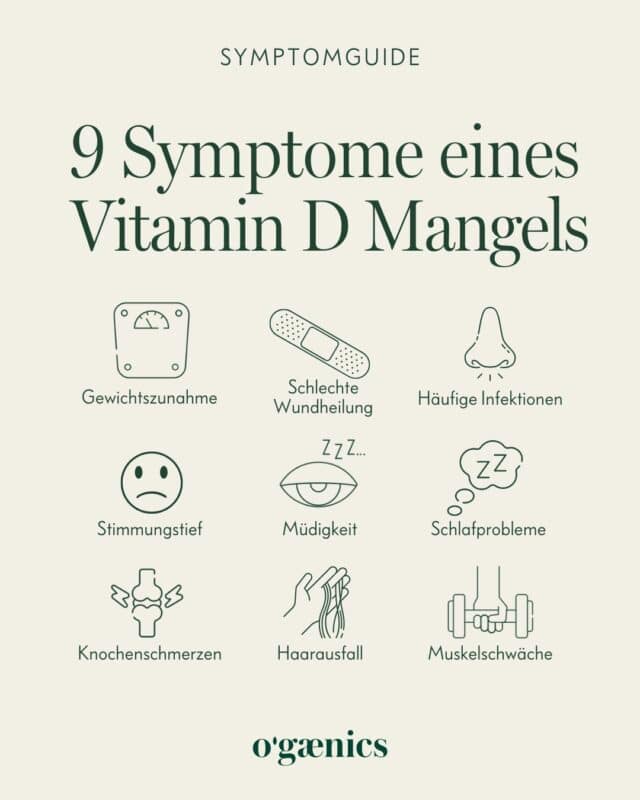
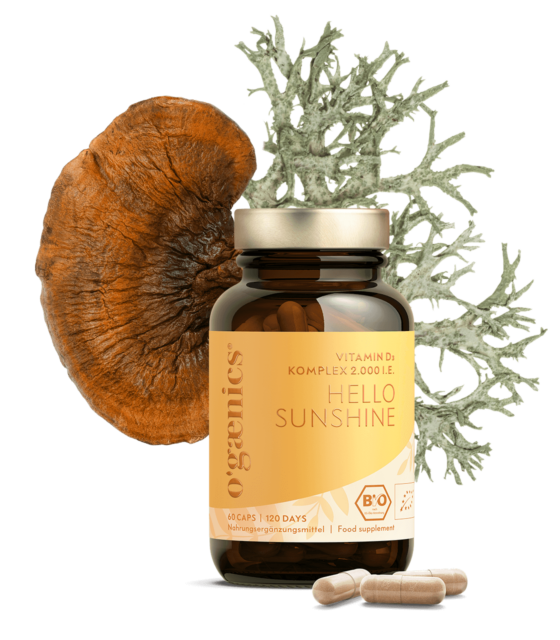
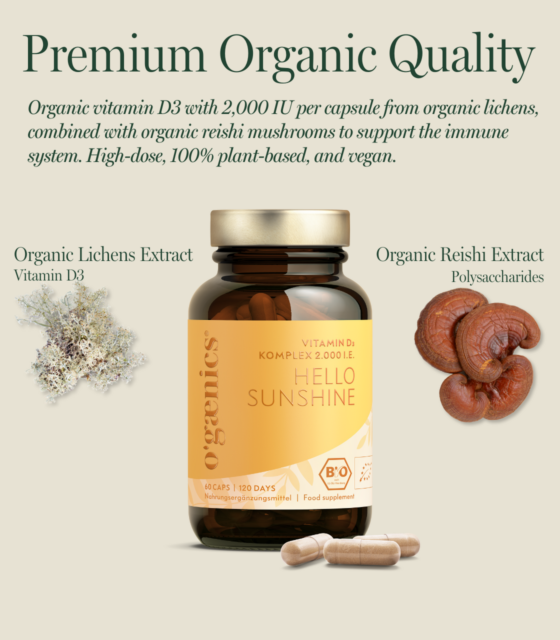
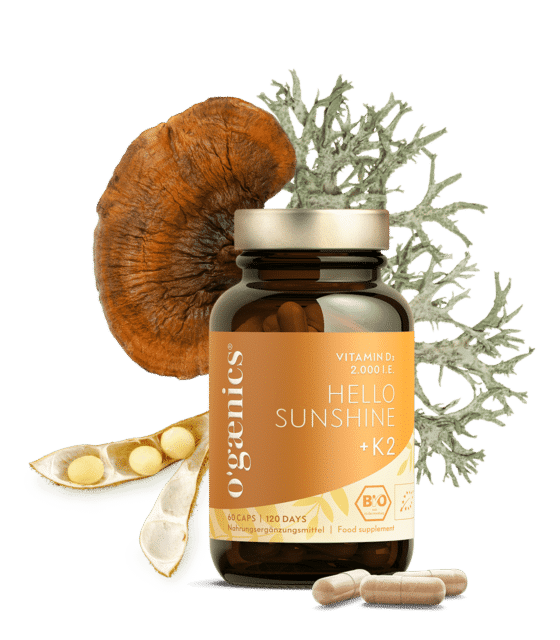
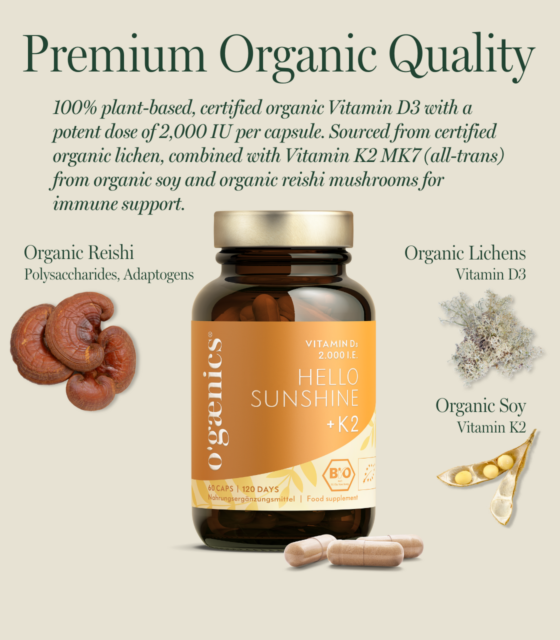
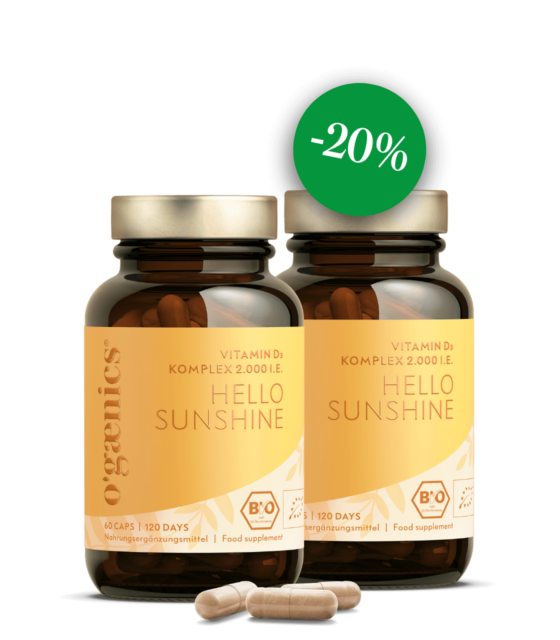
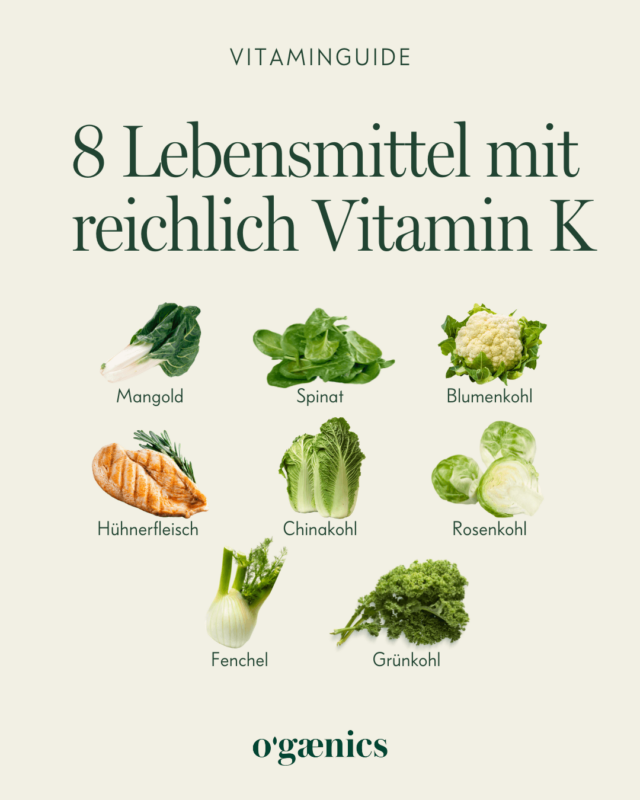



 No products in the cart.
No products in the cart.